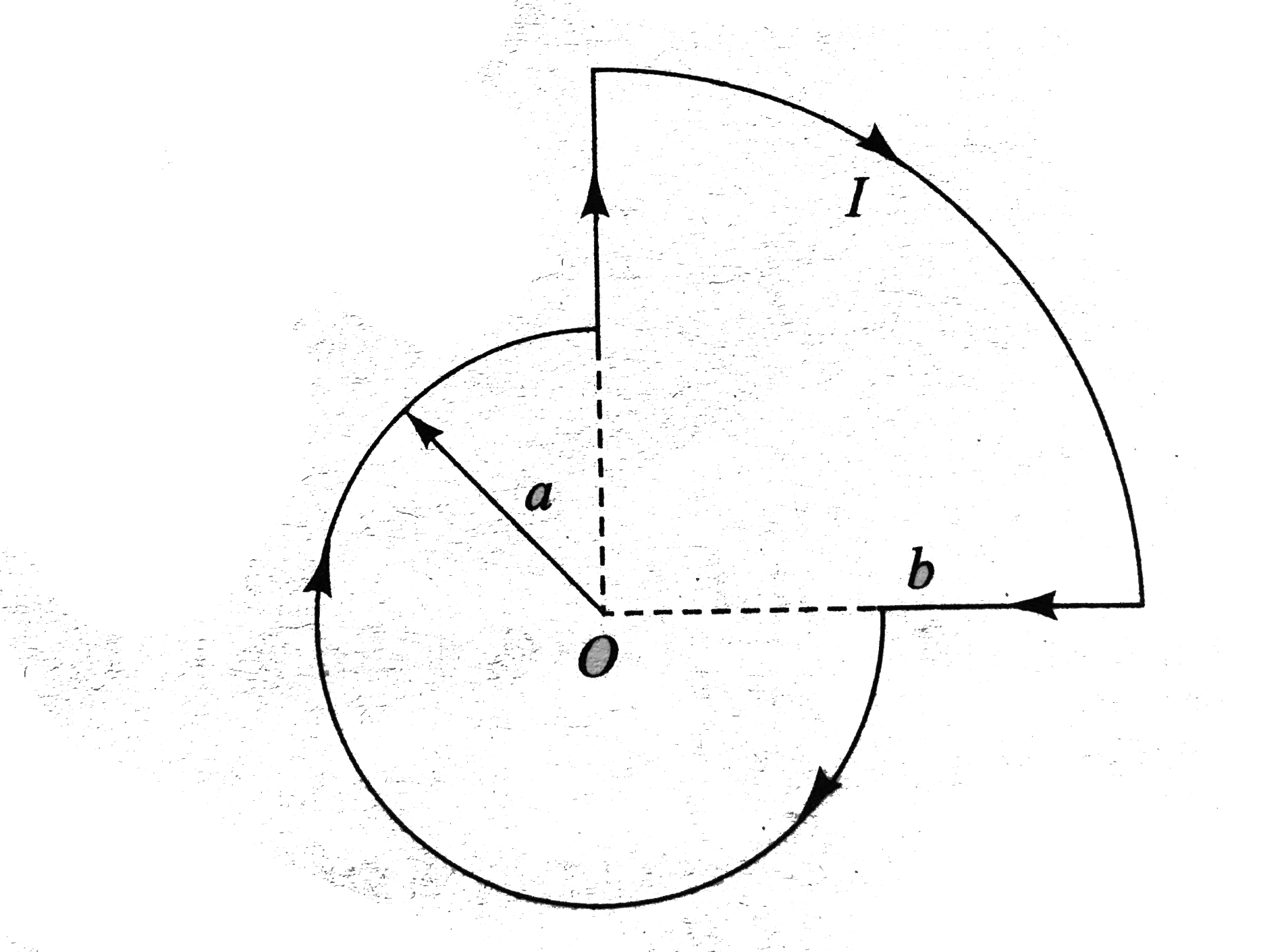The magnetic induction on the equatorial line of a short magnet at distance d from the centre of the magnet is B. At what distance on the equatorial line of the magnet the magnetic induction would become 4B?
To solve the problem, we need to determine the distance on the equatorial line of a short magnet where the magnetic induction becomes four times the initial value. Let's break down the solution step by step.
Step 1: Understand the formula for magnetic induction
The magnetic induction B at a distance r from the center of a short magnet is given by the formula:
B=μ04πmr3
where:
- μ0 is the permeability of free space,
- m is the magnetic moment of the magnet,
- r is the distance from the center of the magnet.
Step 2: Set up the initial condition
We know that at a distance d from the center of the magnet, the magnetic induction is B:
B=μ04πmd3
Step 3: Set up the condition for the new magnetic induction
We want to find the distance d′ where the magnetic induction becomes 4B:
4B=μ04πm(d′)3
Step 4: Relate the two equations
From the two equations, we can express 4B in terms of B:
4(μ04πmd3)=μ04πm(d′)3
Step 5: Cancel common terms
Since μ04π and m are common in both sides, we can cancel them out:
41d3=1(d′)3
Step 6: Rearranging the equation
Rearranging gives us:
(d′)3=d34
Step 7: Solve for d′
Taking the cube root of both sides, we find:
d′=d√(3)4=d22/3
Final Result
Thus, the distance d′ at which the magnetic induction becomes 4B is:
d′=d22/3
The magnetic induction B at a distance r from the center of a short magnet is given by the formula:
B=μ04πmr3
where:
- μ0 is the permeability of free space,
- m is the magnetic moment of the magnet,
- r is the distance from the center of the magnet.
We know that at a distance d from the center of the magnet, the magnetic induction is B:
B=μ04πmd3
We want to find the distance d′ where the magnetic induction becomes 4B:
4B=μ04πm(d′)3
From the two equations, we can express 4B in terms of B:
4(μ04πmd3)=μ04πm(d′)3
Since μ04π and m are common in both sides, we can cancel them out:
41d3=1(d′)3
Rearranging gives us:
(d′)3=d34
Taking the cube root of both sides, we find:
d′=d√(3)4=d22/3
Thus, the distance d′ at which the magnetic induction becomes 4B is:
d′=d22/3
Topper's Solved these Questions
- BOOK - AAKASH SERIESCHAPTER - MAGNETISMEXERCISE - ADDITIONAL EXERCISE22videos
MAGNETISM
- BOOK - AAKASH SERIESCHAPTER - MAGNETISMEXERCISE - PROBLEMS (LEVEL-I)21videos
MAGNETISM
- BOOK - AAKASH SERIESCHAPTER - LOGIC GATESEXERCISE - Exercise (Very Short Answer)10videos
LOGIC GATES
- BOOK - AAKASH SERIESCHAPTER - MOTION IN A PLANEEXERCISE - EXERCISE-3 (Circular Motion)7videos
MOTION IN A PLANE
Similar Questions
The magnetic induction at centre O Fig.
 View Solution
View SolutionThe field due to a magnet at a distance R~ from the centre of the magnet is proportional
View SolutionMagnetic induction of the equilateral point od short magnet at distance r from the centre of dipole is →B. its value at an axial point at same magnet and at same distance is
View SolutionUnit of magnetic induction field B is
View SolutionThe magnetic field on the axis at a distance z from the centre of the bar magnet would be ?
View SolutionIn case of a bar magnet, lines of magnetic induction
View SolutionAn electric kettle has two coils. When one of these is switched on, thje water in the kettle boils in 6 minutes. When the other coil is switched on, the water boils in 3 minutes. If the two coils are connected in series, the time taken to boil the water in the kettle is
View SolutionThe magnetic induction field strength due to a short bar magnet at a distance 0.20 m on the equatorial line is 20×10−6T. The magnetic moment of the bar magnet is
View SolutionA short bar magnet has a magnetic moment of 0⋅48JT−1. Give the direction and magnitude of the magnetic field produced by the magnet at a distance of 10cm from the centre of the magnet on (i) the axis (ii) the equatorial line (normal bisector) of the magnet.
View SolutionA short bar magnet has a magnetic moment of 0⋅48JT−1. Give the direction and magnitude of the magnetic field produced by the magnet at a distance of 10cm from the centre of the magnet on (i) the axis (ii) the equatorial line (normal bisector) of the magnet.
View Solution

